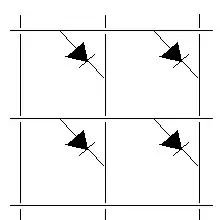A friend and I are trying to make a chess board where you play against a chess engine. The move the chess engine plays is shown by lighting a few LEDs on the board and you have to move that piece to that location.
Now I have a Raspberry Pi 2 and it has 40 GPIO pins where 27 are only I/O if I am correct, where I need 6 of them for something else.
So my question is, what way to connect 81 LEDs to a maximum of 21 pins is the easiest? The best solution would be something that we can buy which we can connect LEDs to instead of making all the circuits ourselves.
All help is welcome though!
